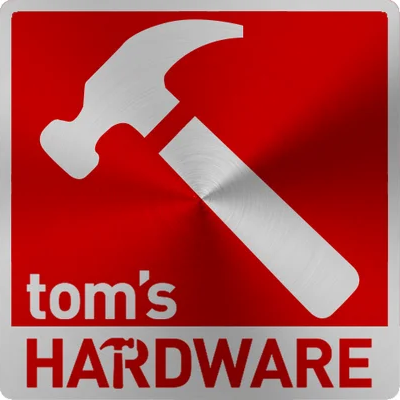Sponsored by Que Publishing
Upgrading And Repairing PCs 21st Edition: Processor Features
Processor Socket And Slot Types
Intel and AMD have created a set of socket and slots for their processors. Each socket or slot is designed to support a different range of original and upgrade processors. The table below shows the designations for the various standard processor sockets/slots and lists the chips that drop into them.
Chip Class | Socket | Pins | Layout | Supported Processors | Introduced |
|---|---|---|---|---|---|
Intel P4/Core | 423 | 423 | 39x39 SPGA | Pentium 4 FC-PGA | Nov. 2000 |
478 | 478 | 26x26 mPGA | Pentium 4/Celeron FC-PGA2, Celeron D | Oct. 2001 | |
T (LGA 775) | 775 | 30x33 LGA | Pentium 4/Extreme Edition, Pentium D, Celeron D, Pentium dual-core, Core2 | June 2004 | |
LGA 1156 (Socket H) | 1156 | 40x40 LGA | Pentium, Core i3/i5/i7, Xeon | Sept. 2009 | |
LGA 1136 (Socket B) | 1366 | 41x43 LGA | Core i7, Xeon | Nov. 2008 | |
LGA 1155 (Socket H2) | 1155 | 40x40 LGA | Core i7, i5, i3 | Jan. 2011 | |
LGA 2011 | 2011 | 58x43 hexLGA | Core i7 | Nov. 2011 | |
AMD K8 | 754 | 754 | 29x29 mPGA | Athlon 64 | Sept. 2003 |
939 | 939 | 31x31 mPGA | Athlon 64 v.2 | June 2004 | |
940 | 940 | 31x31 mPGA | Athlon 64 FX, Opteron | Apr. 2003 | |
AM2 | 940 | 31x31 mPGA | Athlon 64/64FX/64 X2, Sempron, Opteron, Phenom | May 2006 | |
AM2+ | 940 | 31x31 mPGA | Athlon 64/64 X2, Opteron, Phenom X2/X3/X4, II X4 | Nov. 2007 | |
AM3 | 9412 | 31x31 mPGA | Athlon II, Phenom II, Sempron | Feb. 2009 | |
AM3+ | 9412 | 31x31 mPGA | "Bulldozer" Processors | Mid-2011 | |
F (1207 FX) | 1207 | 35x35 LGA | Athlon 64 FX, Opteron | Aug. 2006 | |
AMD A | FM1 | 905 | 31x31 LGA | A4, A6, A8, Athlon II, E2, Sempron | Jul. 2011 |
FM2 | 904 | 31x31 LGA | A4, A6, A8, A10 | Sept. 2012 |
Sockets 1, 2, 3, and 6 are 486 processor sockets and are shown together in the figure below so you can see the overall size comparisons and pin arrangements between these sockets.
Sockets 4, 5, 7, and 8 are Pentium and Pentium Pro processor sockets and are shown together in the figure below so you can see the overall size comparisons and pin arrangements between these sockets.
When the Socket 1 specification was created, manufacturers realized that if users were going to upgrade processors, they had to make the process easier. The socket manufacturers found that 100 lbs. of insertion force is required to install a chip in a standard 169-pin Socket 1 motherboard. With this much force involved, you easily could damage either the chip or the socket during removal or reinstallation. Because of this, some motherboard manufacturers began using low insertion force (LIF) sockets, which required a smaller 60 lbs. of insertion force for a 169-pin chip. Pressing down on the motherboard with 60–100 lbs. of force can crack the board if it is not supported properly. A special tool is also required to remove a chip from one of these sockets. As you can imagine, even the LIF was relative, and a better solution was needed if the average person was ever going to replace his CPU.
Manufacturers began using ZIF sockets in Socket 1 designs, and all processor sockets from Socket 2 and higher have been of the ZIF design. ZIF is required for all the higher-density sockets because the insertion force would simply be too great otherwise. ZIF sockets almost eliminate the risk involved in installing or removing a processor because no insertion force is necessary to install the chip and no tool is needed to extract one. Most ZIF sockets are handle-actuated: You lift the handle, drop the chip into the socket, and then close the handle. This design makes installing or removing a processor easy.
The following sections take a closer look at those socket designs you are likely to encounter in active PCs.
Current page: Processor Socket And Slot Types
Prev Page Hardware-Assisted Virtualization Support Next Page Intel Sockets: LGA 775, LGA 1156, LGA 1366, And LGA 1155Get Tom's Hardware's best news and in-depth reviews, straight to your inbox.
Tom's Hardware is the leading destination for hardcore computer enthusiasts. We cover everything from processors to 3D printers, single-board computers, SSDs and high-end gaming rigs, empowering readers to make the most of the tech they love, keep up on the latest developments and buy the right gear. Our staff has more than 100 years of combined experience covering news, solving tech problems and reviewing components and systems.


